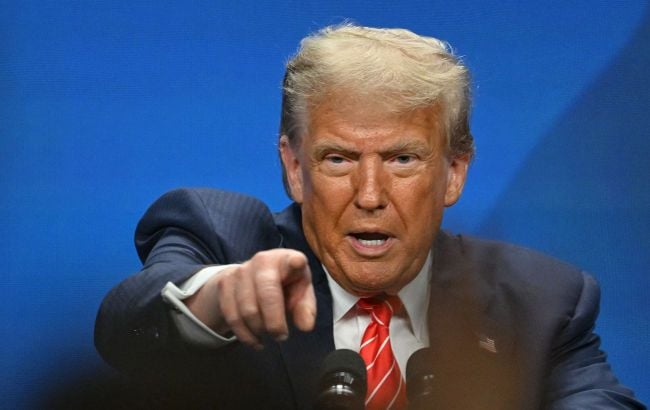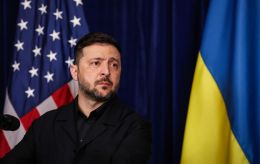Graham's sanctions bill is tough — But will Trump use it?
 US President Donald Trump (Photo: Getty Images)
US President Donald Trump (Photo: Getty Images)
This week, US Congress reignited discussions around a bill introduced by Senator Lindsey Graham, which proposes unprecedentedly tough sanctions against Russia.
RBC-Ukraine explains the core of the legislation and why, after several months of silence, it has returned to the spotlight.
Key questions:
-
What makes Graham's bill so dangerous for Russia?
-
Why has Congress delayed its passage?
-
What concessions are lawmakers willing to offer Trump?
This week, Senator Lindsey Graham announced that his sanctions bill would be considered by the Senate on 9 July, but that did not happen. Instead, Senate Republican Majority Leader John Thune stated that the bill is still being revised.
"We are working with the administration [Trump's – ed.], with the House to try and get it in a form where it's ready," the politician said.
According to him, a vote may take place before Congress's August recess. If not, the bill will not return to the agenda before 9 September. Overall, the timing of the review depends more on political calculations than on the congressional calendar. Meanwhile, Senator Graham is currently in Rome for the Ukraine Recovery Conference, where he also took part in a meeting of the Coalition of the Willing — marking the first time US officials have participated in such an event.
Key provisions of the bill
The Graham bill (originally titled the Sanctioning Russia Act of 2025), registered as S.1241, was introduced back in April this year amid Donald Trump's reluctance to impose sanctions on Russia. It is also sometimes referred to as the Graham-Blumenthal bill, after Democratic Senator Richard Blumenthal, who is also actively promoting the initiative.
According to the bill's authors, its goal is to apply such serious pressure on Russia that the Kremlin will ultimately agree to end its aggression against Ukraine and enter into genuine peace negotiations.
The bill put forward by Senator Graham introduces a wide range of direct and indirect restrictions on Russia. In particular, it includes asset freezes and bans on transactions for Russian officials, military personnel, oligarchs, and others who support the armed forces.
The document imposes sanctions on key banks such as the Central Bank of Russia, Sberbank, and Gazprombank. It also prohibits US institutions from conducting transactions with Russia and restricts Russian entities from listing securities on US stock exchanges.
Additionally, the bill bans the export of energy products from the US to Russia and prohibits investments in the Russian energy sector. It introduces secondary sanctions against foreign companies that support resource extraction in Russia, including in the oil, gas, and uranium sectors.
Beyond these sanctions, the bill imposes significant trade restrictions, including 500% tariffs on all Russian-origin goods and services, particularly energy products, on top of any existing tariffs.
Furthermore, it introduces secondary 500% trade tariffs on countries that knowingly sell, supply, transfer, or purchase Russian-origin oil, natural gas, uranium, petroleum products, or petrochemicals. These tariffs would apply to all goods and services imported into the United States from those countries.
Why the bill has not yet been passed
Although the initiative has been backed by as many as 85 out of 100 senators, Lindsey Graham was in no rush to push for its actual consideration in the Senate. He waited for informal approval of the bill from the US President, even while regularly reminding the public of his proposal. In parallel, Senators Graham and Blumenthal made trips to Ukraine and Europe to coordinate positions with US allies.
Progress on the bill emerged at the end of June, when, following another phone conversation with the Russian President, Trump began to express dissatisfaction with Putin's actions. On 29 June, Graham announced that he had reached an agreement with the US President, although some points in the bill had to be softened.
Room for maneuver for Trump
The revised version of the bill includes several provisions that give the US President greater flexibility in dealing with Russia. The White House insists that the bill must preserve the President's exclusive authority over foreign policy. In essence, this means that the final decision on whether to implement any sanctions would be made personally by Trump, and the bill would not obligate him to do so.
Trump would be required to make a formal determination that Russia is either unwilling to move toward a peace agreement, is violating existing agreements, is launching renewed aggression against Ukraine, or is attempting to overthrow the government in Kyiv.
Among the proposed relaxations being discussed is the introduction of a presidential waiver. Under this waiver, Trump could delay the implementation of the 500% tariffs for 180 days. A second postponement would also be possible but would require congressional approval. The waiver would not apply to countries officially designated as state sponsors of terrorism.
In May, Reuters reported, citing anonymous European diplomats, that some countries, including Germany and Hungary, had expressed concerns about the secondary tariffs. In response, according to sources, senators agreed to include a provision in the bill allowing the US President to exempt certain countries, goods, or services from the tariffs for 180 days on national security grounds.
According to Politico, the bill was also amended to include exemptions for specific items, such as humanitarian aid and activities related to US intelligence operations. These changes, sources said, were intended to reduce resistance from some Republicans and the Trump administration, who were advocating for more flexibility in the implementation of the sanctions.

